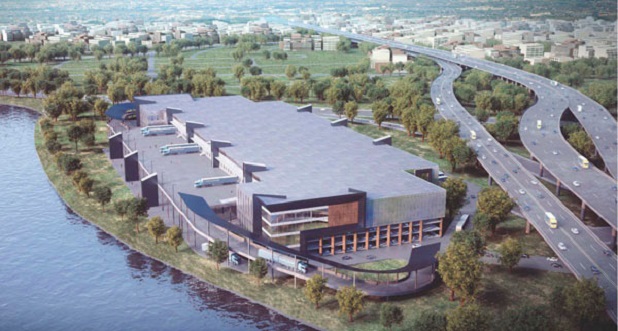 HSA Commercial recently sold this 218K building at the Delany Commerce Center in Waukegan, IL. Developers and investors favor product this size due to the robust demand from users.
HSA Commercial recently sold this 218K building at the Delany Commerce Center in Waukegan, IL. Developers and investors favor product this size due to the robust demand from users.
CHICAGO—The rise of e-commerce, and the subsequent supercharge given to the warehouse and distribution sector, has greatly increased Chicago's importance as a core industrial market. But a surge in development over the past few years, especially of big box distribution centers, has brought about a few changes.
“That wave of activity has slowed down,” George Cutro, director of industrial research for JLL in Chicago, tells GlobeSt.com. Developers have decided to take a pause, at least for large buildings, and wait for tenants to fill up the empty spaces.
In the I-80 submarket, one of the hottest submarkets for distributors, builders completed more than 4.2 million square feet of new space in the first two quarters of this year, according to JLL. Just 442,000 square feet of new space remains under construction.
But new big box leases, meaning those of more than 750,000 square feet, remain absent across the Chicago market, according to Cutro.
Still, JLL officials also say that demand for such spaces exists. “There are some deals in the pipeline,” says Keith Stauber, managing director, JLL, and if these come through, it will reaffirm Chicago's importance as a regional distribution center.
One reason for confidence is that buildings of this scale are typically backed by institutional players with deep pockets. “They can afford to take on projects of this significance,” Stauber adds, and wait for tenants ready to fully occupy massive, class A structures. Currently, landlords are beginning to drop hints that they might be willing to take on smaller tenants, but “we don't see any fire sales going on.”
However, leasing activity among smaller-size segments remains solid, according to JLL. Many thriving local firms have expanded their footprint, particularly within the 20,000 to 50,000 and 150,000 to 250,000-square-foot segments.
“I think that speaks to the strength of the economy,” Stauber says. The national and international companies were the first to move when the latest economic recovery set in, and after several more years of steady growth, an increasing number of local players now have the confidence to occupy new spaces.
JLL tracks the number of users looking for new space, and Chad Buch, a senior research analyst with the company, says 13 currently want more than 500,000 square feet, with two needing more than 1.1 million square feet. But about 70 are looking for between 100,000 and 300,000 square feet. “That's really robust,” he says.
That explains why developer focus has shifted toward speculative projects within the 100,000 to 300,000 square-foot segment. And after years of robust construction activity throughout hot submarkets like I-55 and O'Hare, Cutro says, “we're seeing more development outside of Main and Main,” including along corridors such as the I-355 and I-88 toll roads.
Both Cutro and Stauber emphasize that even though the biggest users may have temporarily slowed down new leasing, the overall numbers should give investors confidence in the region. Year-to-date absorption totals just over 12 million square feet, with nearly eight million in the second quarter. And the vacancy rate seems to have stabilized below 7.0% and now stands at just 6.47%.
“We're on track for a solid, healthy year,” Buch says.





